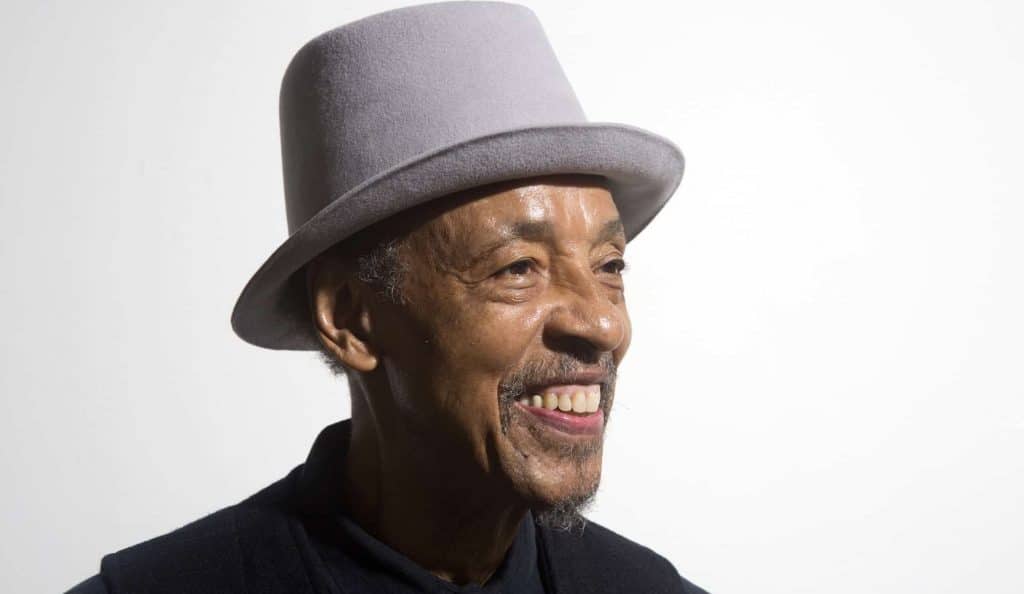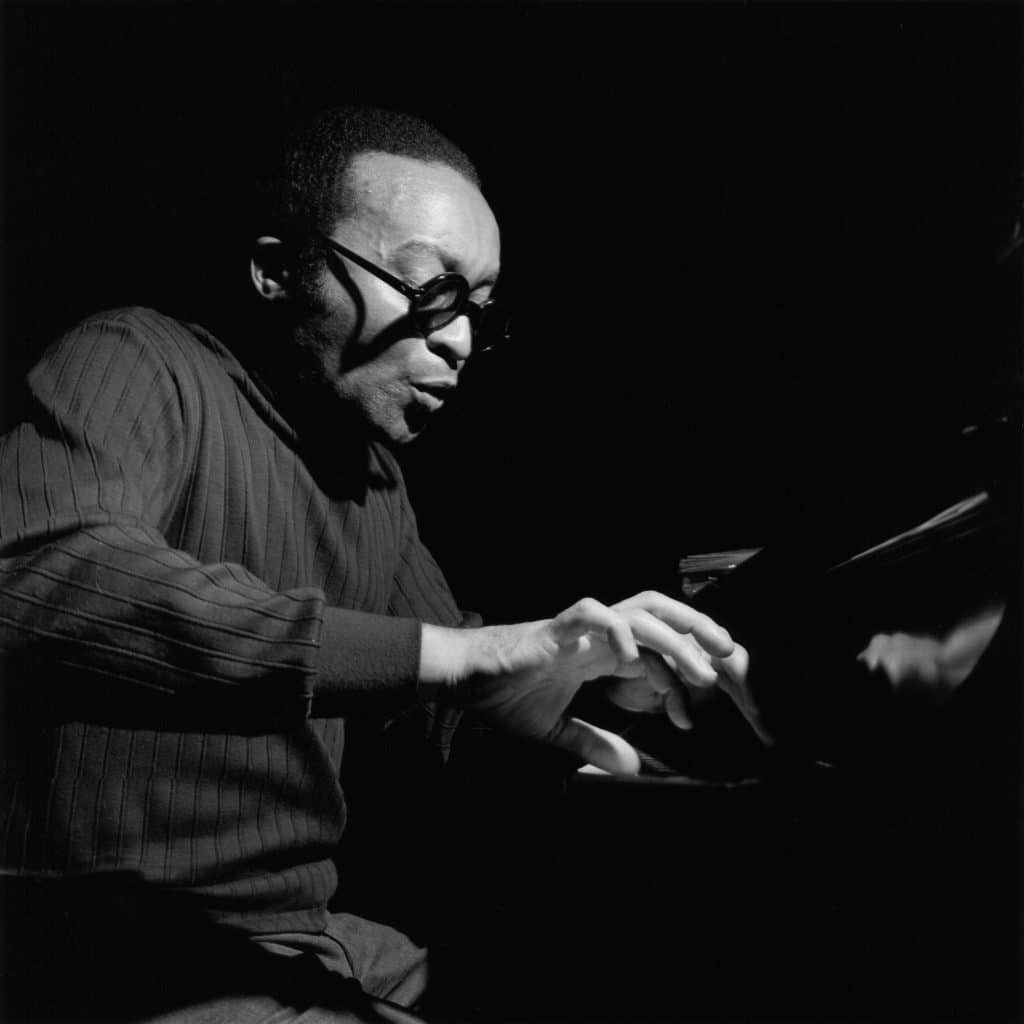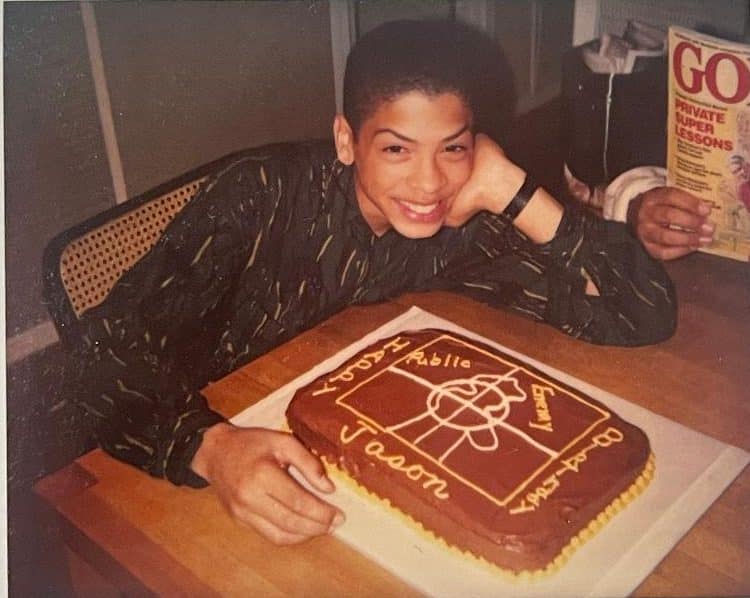The Joy of Slipping
With a new memoir, Henry Threadgill reveals how and why his music got where it is. With his new music, he hints at where it’s going.

In 2016, the cornetist Graham Haynes joked that the composer, alto saxophonist, and flutist Henry Threadgill should have received a Pulitzer Prize solely on the basis of his song titles. Haynes, the son of the standard-bearing jazz drummer Roy Haynes, had a point; in the book, Epistrophies: Jazz and the Literary Imagination, author Brent Hayes Edwards devotes an entire chapter to the narratives implied by Threadgill titles such as “Jenkins Boys Again, Wish Somebody Die, It’s Hot,” and “To Undertake My Corners Open.”
“People always ask me about those song titles,” Threadgill writes in his memoir, Easily Slip Into Another World: A Life in Music, published in May and written with Edwards, a Columbia University professor who directs the scholars-in-residence program at the Schomburg Center for Research in Black Culture. “They assume too quickly that titles are always descriptive or programmatic: clues about content . . . They might have roots in my artistic process— in the sundry stuff I encountered as I was making the work—but their function isn’t to suggest that the music can be reduced to those sources. They function as a spark . . . to spur your own thought process as you listen.” To help us slip away, wherever we go.
Threadgill did in fact win a Pulitzer in 2016, for Music, in recognition of In for a Penny, In for a Pound, which he recorded with Zooid, his longest-running ensemble in a career that spans seven decades. That music—all his celebrated work—reflects a personal approach to composition and bandleading that Threadgill took up long ago and has refined ever since. His signature as a composer is distinct; no one else’s music sounds even remotely like his. It moves with a singular flow—“a smooth, frictionless groove,” he calls it. Unlikely or even troublesome combinations of instruments—tuba, cello, and acoustic guitar in the current Zooid, for instance— achieve unexpected balance and clarity. There are never tropes or licks or transparent references, but still always a familiar identity, less in the sense of how the music is shaped than in where it takes listeners.
A sense of communal engagement— the depth of the exchanges his compositions stimulate among players—pervades, and is largely the point. Jose Davila, who plays tuba and trombone in Zooid and first worked with Threadgill in 1995, told me, “He doesn’t treat me or anyone else like a sideman. I’m a colleague. We sit down and talk about the things he’s working on, for hours sometimes.
It’s made me think less like a band member and more like an integral part of the creative process, the formulation process.” Threadgill’s aesthetic owes to the supportive community he found in Chicago more than 60 years ago. It has, in turn, nurtured creativity in New York, where he has lived in the East Village for nearly a half- century. Now 79, he is both elder master and renegade. Musicians call his music demanding yet also inviting. However complex, it takes shape as organically as do cloud formations or a good conversation. Rhythms are forceful yet slippery, like a wave’s undertow. For me, Threadgill’s music doesn’t so much define our lives and times as suggest its possibilities.
Early in his book, Threadgill shares childhood memories of listening to the jukebox in his father’s “sort of gambling house” on Chicago’s South Side. “Sometimes it seemed the spell could be sustained indefinitely,” he writes. “One tune would end, but the beat continued . . . and then the jukebox arm would deliver the next disc into position. So easy to slip into another world.” Even as a boy, he had a composer’s ear, “curious to decipher the secrets of the songs’ pulsating architecture.”
Listening to Studs Terkel’s radio show on Chicago’s WFMT, which moved easily from Mexican son jarocho to Indian classical music and on, “your ears could roam, and you heard unexpected echoes between far-flung corners of the globe.” The music of his grandmother Gertrude’s Church of God in Christ congregation was “like a ritual of theater and movement and sound and drama. And it wasn’t planned.”
Jazz gripped him. Hearing Charlie Parker’s “dazzlingly quick-witted improvisations” for the first time felt “like watching someone leap off a cliff and take flight.” (Soon after, his mother got him a tenor saxophone; he’d later take up alto as his primary instrument, along with flute, and, on occasion, the baritone saxophone.) Ornette Coleman’s “Lonely Woman” was “an alarm clock going off.” More so than the sound, the geometry of John Coltrane’s playing on Miles Davis’s ’Round About Midnight captivated him: “You could hear the shapes in his playing.” He was moved enough by Sonny Rollins’s excellence and dedication to stencil Rollins’s name on his saxophone case.
A young Threadgill looked for liberation, not roadmaps. He was touched most deeply by willful outliers. Pianist Ahmad Jamal’s music “didn’t do what it was ‘supposed to do.’” Claude Debussy’s compositions called him “to dare, to go ahead and take the leap.” Edgard Varèse’s music “wasn’t behaving.” Threadgill held onto that “obstinancy” as a model. At Woodrow Wilson Junior College, he wondered: “How can you give music a different sort of formal integrity, one that wouldn’t rely on the old systems of harmonic structure?” He wasn’t the first to ask that question, but he has devised his own answer.
“How do you ‘become’ a composer?” Threadgill asks in his book. “It’s like you’re a snowball rolling down a hill,” accumulating information and expertise without pretending to control the process. One key, he explains, is context: “Music is everything that makes the musician: family, friends, hardships, joys, the sounds on the street, how tight you buckle your belt, the person who happens to be sitting next to you on the subway car, what you ate for breakfast—all of it.”
Threadgill came of age as a cultural revolution was brewing, especially in Chicago. The Association for the Advancement of Creative Musicians—the A.A.C.M., as it’s known—began in 1965 as a collective of ambitious Chicago musicians fed up with a restrictive scene and determined to foster original music; it remains an engine of creative inspiration and practical outreach. In its earliest iteration, “You had to be able to play everyone’s music and give 150% of your energy and focus to the aesthetic they wanted to explore, whatever it was.” The pianist Muhal Richard Abrams, an A.A.C.M. founder, “set me on fire,” he writes. Abrams was an example of supreme discipline, brilliance, curiosity, and nonconformity, drawn not from a history book or an elite institution but “out there in the community.” Threadgill left that fertile scene in August 1966. At 22, he’d lost his draft deferment because he couldn’t afford to attend Chicago’s American Conservatory of Music full time. If he volunteered rather than wait to be drafted, he’d enter the Army as a musician. Within months, he was head arranger for an elite military ensemble at Fort Riley, in Kansas. When asked to arrange a medley of patriotic songs—“God Bless America,” “The Star- Spangled Banner” and others—for an important ceremony, he did so with an “angularity and dissonance” inspired by the music of Igor Stravinsky and Thelonious Monk. Eight bars in, a Catholic archbishop stood up, shouting “Blasphemy!”
The ceremony got shut down. Threadgill lost his post and was assigned to the band of the Fourth Infantry Division, in Pleiku, in the Central Highlands of Vietnam, as the war raged.
“As though a musical peccadillo could merit the death sentence,” he writes, which it nearly was. Threadgill’s account of his service is a notably disturbing and colorful addition to our Vietnam War literature. He narrowly escaped death during the Tet Offensive. His back suffered permanent damage after his jeep flipped. He witnessed unspeakable atrocities. He was never the same. Yet he also never forgot the sound of the gongs played by Montagnards of the Central Highlands, which later inspired the hubkaphone, his homemade instrument constructed from hubcaps suspended on pipes. And, he writes, “It’s like I grew a set of antennae over there. When I returned, my reception equipment was different . . . that height- ened sensitivity became one of the main things that shaped me into the composer I’ve become.”
Upon his return to the States in 1969, the progress of his A.A.C.M. colleagues inspired him. Roscoe Mitchell’s Sound, recorded shortly after he left for the army, “opened up an entirely new route in terms of tempo and space and silence.” His first recording assignment “that really counted” was Abrams’s Young at Heart/Wise in Time. “This wasn’t a job,” he writes. “This was creative music. It was important.”
Threadgill never wavered from one mission: to compose and play his own music. In 1971, backstage after a Duke Ellington concert, his hero seemed interested in working together. “What if Duke had made me an offer to work with him as an arranger? I love him madly, but I can’t go to work for Duke Ellington. I want to lead my own band and play my own music. I need to work for me.”
Initially, he formed an ensemble called Reflections with drummer Steve McCall, who was among the A.A.C.M.’s founders, and bassist Fred Hopkins—a collective that started with Threadgill’s commission for a Chicago theatrical production; he adapted Scott Joplin’s piano rags for a piano-less trio. They changed the name to Air and, in 1975, released Air Song, the first of a series of stirring and highly influential albums. Threadgill eschewed the “athletic displays of bottomless improvisational genius” of his hero, Rollins, in a similar configuration, instead seeking, and finding, the “subtle line between zero improvisation and total improvisation.”
If Air was elemental to creative music’s possibilities in the 1970s, Threadgill’s Sextett was a bright light of the eighties. With seven members, the band’s coy name reflected Threadgill’s concept of its two drummers—one behind the beat, one nearly on top of it—playing two trap sets— one tuned in fourths, the other in fifths— as a single entity. His groups ever since have featured unlikely instrumental combinations. His 1979 album X-75 Volume 1 engaged a nonet of four basses, four winds, and a vocalist. His first Very Very Circus band included two tubas. 2018’s Double Up, Plays Double Up Plus featured three pianists.
If Ellington famously wrote parts for specifics musicians, Threadgill hears combinations of instruments, and finds players for these configurations, always seeking “a special level of commitment . . . a sort of abandonment; the musicians have to give themselves over completely to the art.”
His 2001 release, Everybodys Mouth’s a Book, the final one by his Make a Move band, signaled what he terms “the last step” of his development as a composer— a sound and approach he’d been chasing and finally found, inspired by revisiting Varèse’s music. Building upon Varèse’s idea of “infolding” and “outfolding” intervals to form chromatic harmonies, he formulated his own “language” and “syntax” based on assigned intervals for each instrument and combinations thereof. Improvisation remains a key element, but players must work within the system.
A few pages after Threadgill spells this out, he addresses his music’s alluring yet elusive rhythmic orientation. James Brown implored his bands to get back to “the one.” Threadgill wonders, “What if you never get off the one?” He wants, if only by illusion, to “eradicate any demarcation of meter.” Above all else, his music is modular. “The score is a starting point, not the final product,” he writes. His current Zooid band—acoustic guitarist Liberty Ellman, cellist Christopher Hoffman, drummer Elliot Humberto Kavee, and Jose Davila on tuba and trombone—have indeed abandoned themselves to this system; they sound and feel more like an organism than an ensemble.
In his book, Threadgill cautions against sitting “in the mausoleum of your accom- plishments.” The ensemble on The Other One, released a week after his book’s publication, features three saxophones, two bassoons, two cellos, violin, viola, tuba, percussion, and piano, performing a three-movement composition. Threadgill serves solely as composer and conductor. Yet even without his pungent alto saxo- phone tone or his often pensive-sounding flute, the music casts his familiar spell. He’s gathered musicians from both jazz and classical ranks, who are no longer divided by stylistic borders Threadgill helped erase. This sounds like chamber music for a liberated century.
Driving Threadgill’s creations—behind the youthful twinkle in his eyes whenever he smiles—is an attitude: obstinate like Varèse, yes; touched by pain, including that of long-ago war, sure; but also utterly hopeful. I’ll never forget his words to end a public interview we did together at the 2019 Chamber Music America National Conference, before a hotel ballroom filled with composers and musicians:
“Some people get rich in certain styles of music. But most people doing the kind of music we do, they might do well but they don’t get rich as rich goes. I always think back to that pure moment when I was a kid and I wanted to play music. All I wanted to do was be as good as those people I was jumping up and down listen- ing to. There was no reward in that, other than that. I never let that get clouded.
“We don’t talk about it too much, but music and art is spiritual activity. It’s spiritualism of the highest order. It civilizes people. It builds humanity. Poetry, painting, literature, music, dance: In the presence of those things, people behave better. They act better. You become sensitive about humanity, and it’s only through the arts that this happens a certain way. We never verbalized that, but I was always certain that everybody in A.A.C.M. had this ideal in mind.”



